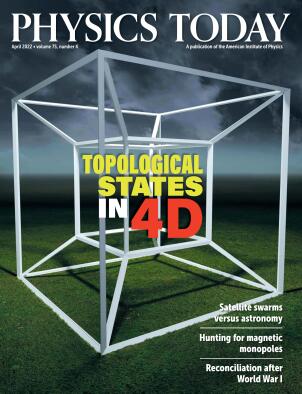Some remarks about Rutherford
DOI: 10.1063/PT.3.4972
Melinda Baldwin’s article in the May 2021 issue of Physics Today (page 26) makes a great contribution in demonstrating how Ernest Rutherford
Baldwin states that Rutherford “quickly distinguished himself as a talented student with a gift for physics and mathematics.” But the records show that he was a normal kid who took two goes at each of the three scholarships he was awarded—for secondary school, university, and research overseas. In the last case, Rutherford was one of two candidates for the 1851 Exhibition Scholarship being offered to New Zealand for 1895. The other candidate, James Maclaurin, was judged better but declined the award.
But it is untrue, as Baldwin asserts, that Rutherford happened to graduate from Canterbury College (now the University of Canterbury) in the first year that students born in the British colonies could compete for the scholarship. The Royal Commission for the Exhibition of 1851 began offering the science research scholarships in 1891. They awarded one to a New Zealander every second year, starting in 1892 with David Jackson, a graduate of the Auckland University College. The scholarship for 1894 was pushed back a year, at the request of the University of New Zealand. If not for that delay, not only would Rutherford not have won the scholarship, but he would not have gone to Cambridge University because it did not accept non-Cambridge graduates for research until 1895.
The new policy is why Rutherford and other non-Cambridge graduates were treated as outsiders by the Cavendish Laboratory’s Cambridge graduates. The usual progression to an academic position at Cambridge was receiving a Cambridge degree, then demonstrating in undergraduate laboratories and conducting research for a few years. Rutherford was the first non-Cambridge graduate accepted there for research, followed by John Townsend from Ireland. When Cambridge started accepting non-Cambridge graduates for research, the Cambridge graduates knew the path would now be much more competitive.
It is also untrue that Rutherford “developed a novel radio-wave detector back in New Zealand and brought it with him to Cambridge.” His “wireless work” was done in England. In New Zealand he studied the magnetizing effect of very short current pulses (
Also, it is not exactly true to say that Frederick Soddy earned the 1921 Nobel Prize in Chemistry for his work with Rutherford. Officially, Soddy’s prize was “for his contributions to our knowledge of the chemistry of radioactive substances, and his investigations into the origin and nature of isotopes.” But it was mainly for the latter.
In 1901 the McGill Physical Society held a debate on the “existence of bodies smaller than an atom,” with Rutherford chairing the meeting. Prior to the meeting, Rutherford wrote to J. J. Thomson that the goal was to “demolish the Chemists.” Soddy, a temporary demonstrator in McGill University’s chemistry department, spoke for the opposition and read a 32-page paper on “chemical evidence for the indivisibility of the atom.” He condemned Thomson and Rutherford, who he said had “been known to give expression to opinions on chemistry in general and the atomic theory in particular which call for strong protest.” 1 After the meeting, Rutherford, who had already determined that a radioactive gas emanated from thorium, asked Soddy to join in the chemical side of his research. In 1908 Rutherford received eight nominations for the Nobel Prize in Physics or Chemistry, but only one of those nominators proposed that he share the prize with Soddy.
Each of those small errors could have been corrected with just a minor change of wording if they had been known. There are many myths in circulation about Rutherford’s life
2
(some of which I have recorded on the “Rutherford mythology” page of my website, www.rutherford.org.nz
References
1. J. Campbell, CERN Courier, May/June 2019, p. 27.
2. J. Campbell, AIP History Newsletter 53(2), 4 (2021).
More about the Authors
John Campbell. (john.campbell@canterbury.ac.nz) University of Canterbury, Christchurch, New Zealand.
